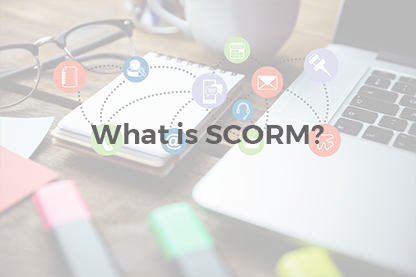The target audience of Learning Management Systems is usually companies that need to build up a skilled labor force. And like any business, online training programs need effectiveness evaluation. Built-in reporting and analytical function display the current situation in your online learning courses, their popularity or, in contrast, abandonment.
Analytics is an essential ellipsis, reporting is a definite stop
A comprehensive analysis allows creating a learning plan to fill the gaps within the company’s roles and help employees to expand their area of expertise. Being similar to the ellipsis, analysis preserves an incomplete scenario of the educational process. Below there’s a shortlist of most applied analytics methods used for LMS performance assessment:
Web Log Analysis identifies learning activity, establishing visits to various system sections. Standard indicators WLA looks into are visit times, durations and number of visits, most and least viewed pages, and user authentication times.
Life-Cycle Analysis uses a visitor-centered approach covering individual learners or learners’ groups (classes, study majors). Its “scope of interest” includes the use of the resources across different study areas, technology adoption level and learners’ participation (learning activities, discussions, etc.)
Learning Progression Analysis based on the combination of data collected with web metrics-driven analysis and users’ learning results achieved through the online training programs.
And after the analytical digging into the diverse segments of the learning platform, reports come up to summarize collected data. In-depth reporting gives detailed feedback of the applied learning methods through viewing employees’ progress, completion stats and more. With these tools, companies take on corporate training with a concrete strategy for action.
Benefits of using reporting tools and analytics in your LMS
A deeper insight in what analytics and reporting are for in the LMS equals getting an answer to the question “who uses your Learning System, and how do they do that?”. So, the key role of this functionality is to bring you the answer on the plate, presenting the whole picture rather than a distorted view of your own.
A present-day Learning Management System has three main kinds of reporting:
Individual. This type displays an overview of an individual user’s performance: which tasks, quizzes and learning material they have been working on. JoomLMS custom grading functionality allows you to track learner performance and grades, configure custom grading scales, and define for each course. These features help to find obstacles which prevent users from successful course completion.
Course. These reports are a comprehensive solution for the courses’ relevance. They show how many learners have completed the course, and who didn’t manage to handle the material. To make it easier to dive into the learning process, the variety of communication tools can be used, e.g. course chats, forums, and the ability to send messages and share files without email input.
System-wide reports display the data gathered over a long period of time. These reports give a transparent overview of how the learners do engage with the content of the system, showing the one that clicked with the public. Or how many have registered within a certain timeframe.
JoomLMS reporting functionality and analytics help to define gaps in users’ knowledge and overall learners' performance, organization's compliance level, etc. Tracking students’ progress, learning paths, downloads, learning materials usage statistics you’ll find ways to improve the figures and get the desired outcome.
LMS Reports That Are Worth Checking Out
JoomLMS advanced system of reports reflecting the learner progress, course completion, course materials access, etc. can be specified by the impact on the learning processes and their productivity. For example:
Reports that foster learning performance. Include Learning Progress/Score and Course Status (finished/in progress/abandoned) and generally show the dynamics of users’ success or failure in courses tasks, and the degree of user engagement by completion rates. To motivate employees for better educational efficiency, certain skills acquired can be demonstrated as crucial for their further growth and never going out of style.
And make your courses even better:
- Answers Breakdown shows if the majority of the learners have messed up particular answers. Maybe these questions are unclear, the course needs tweaking, or the explanation is rather confusing;
- Average View Time allows overseeing the users’ engagement. The more time spent on a particular info slide - the better.
- Time Logs contain information on how much time learners needed to complete tasks/courses. Both success and failure tell a story of the factors that had an impact on such results - demotivated, underskilled, didn’t have relevant information etc.
- Satisfaction Ratings. Both learners and facilitators’ feedback is an essential part of the way to your course improvement. Replace the theory tests with an interactive questionnaire or add gamified elements to the courses to enhance knowledge retention.
Outside of the LMS internal measurements, there are Social Media And Website Statistics reports. Being one of the most essential when gathering data through polls in social media, for example, these reports enable you to see which topics online learners would rather go for, track visitors’ participation and conversion.
Apart from that, many Learning Management Systems offer customizable features, such as the format and scheduling of the delivery of the reports. For example, on the JoomLMS platform there’s an option to send the quiz report by email, and export certain reports in popular file formats (PDF, CSV, TXT, XLS). Some of the Management Systems have an intuitive reporting dashboard rich in data visualizations.
Learning Management Systems are a modern gateway to comprehensive corporate training. But have you kept an eye on the ball of LMS reports already? If you haven’t, most likely you’ve been dropping priceless data that could upgrade your training program.
JoomLMS supports its users with the analytical and reporting functionality that helps to find and solve problems and capitalize on the advantages. From now on you’ll keep your focus on the real-time training plan pressure points and objectives.








